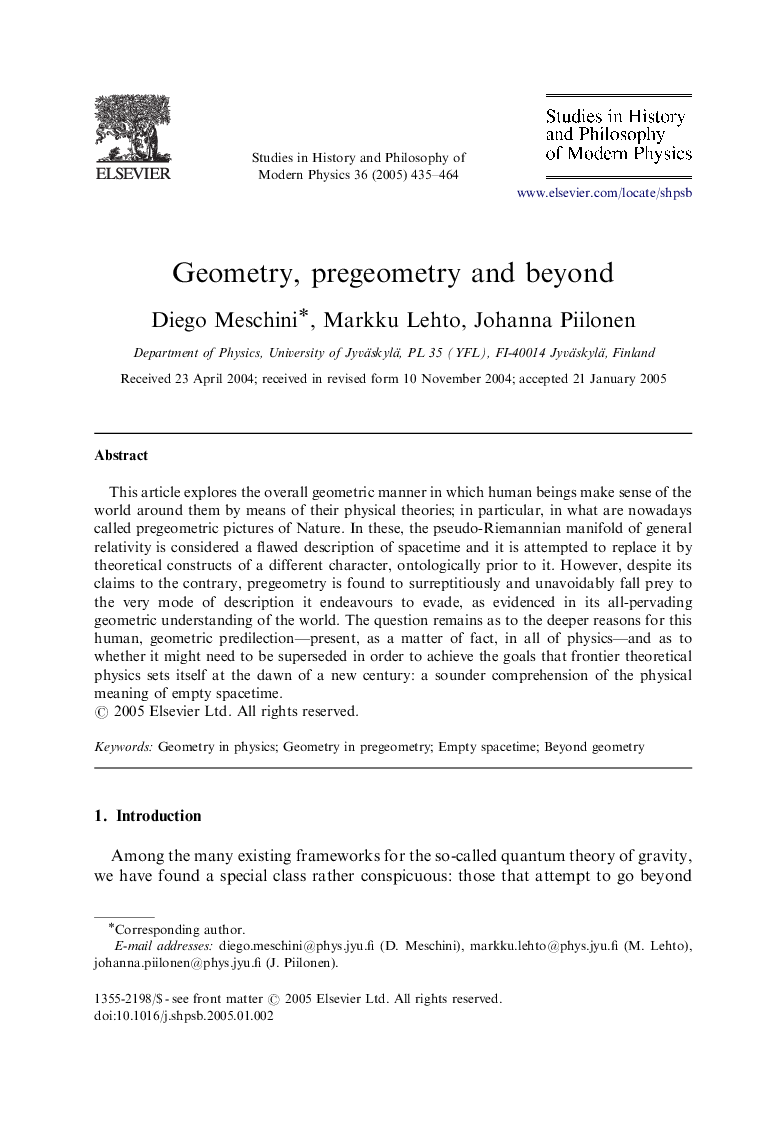| Article ID | Journal | Published Year | Pages | File Type |
|---|---|---|---|---|
| 9742831 | Studies in History and Philosophy of Science Part B: Studies in History and Philosophy of Modern Physics | 2005 | 30 Pages |
Abstract
This article explores the overall geometric manner in which human beings make sense of the world around them by means of their physical theories; in particular, in what are nowadays called pregeometric pictures of Nature. In these, the pseudo-Riemannian manifold of general relativity is considered a flawed description of spacetime and it is attempted to replace it by theoretical constructs of a different character, ontologically prior to it. However, despite its claims to the contrary, pregeometry is found to surreptitiously and unavoidably fall prey to the very mode of description it endeavours to evade, as evidenced in its all-pervading geometric understanding of the world. The question remains as to the deeper reasons for this human, geometric predilection-present, as a matter of fact, in all of physics-and as to whether it might need to be superseded in order to achieve the goals that frontier theoretical physics sets itself at the dawn of a new century: a sounder comprehension of the physical meaning of empty spacetime.
Related Topics
Physical Sciences and Engineering
Physics and Astronomy
Physics and Astronomy (General)
Authors
Diego Meschini, Markku Lehto, Johanna Piilonen,
